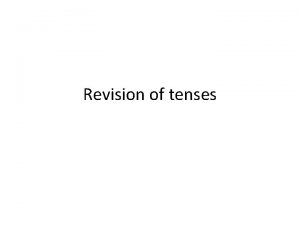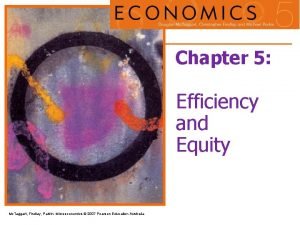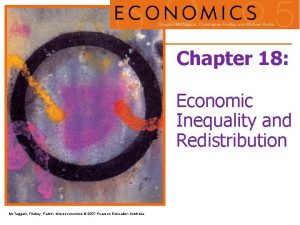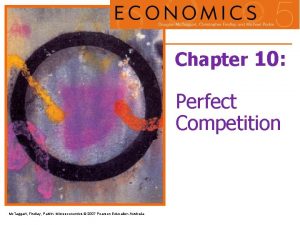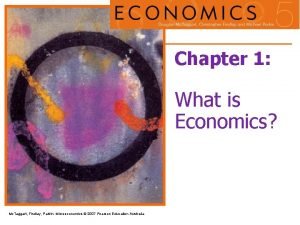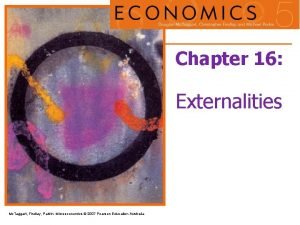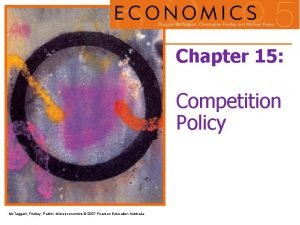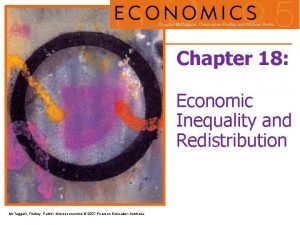J M E Mc Taggart The Unreality of














- Slides: 14

J. M. E. Mc. Taggart “The Unreality of Time” (1908) by Kieran Naylor

Also JME

The Argument § Mc. Taggart argues that time is unreal because our descriptions of time are either contradictory, circular, or insufficient. To frame his argument, Mc. Taggart identifies two descriptions of time, which he calls the A-series and the B-series.

A-Series § ". . . the series of positions running from the far past through the near past to the present, and then from the present to the near future and the far future. . . " § Mc. Taggart says, "the distinctions of past, present, and future are essential to time and. . . if the distinctions are never true of reality, then no reality is in time. " He considers the A-series to be temporal, a true time series because it embodies these distinctions and embodies change.

B-Series § "The series of positions which runs from earlier to later. . . " § The B-series is temporal in that it embodies a direction of change. However, Mc. Taggart argues that the B-series on its own does not embody change itself. § Attacking the B-series, Mc. Taggart argues that time involves change, but because earlier-later relationships never change (e. g. the year 2010 is always later than 2000), the B-series must be an inadequate account of time.

C-Series § ". . . this other series — let us call it the C-series — is not temporal, for it involves no change, but only an order. Events have an order. They are, let us say, in the order M, N, O, P. And they are therefore not in the order M, O, N, P, or O, N, M, P, or in any other possible order. But that they have this order no more implies that there is any change than the order of the letters of the alphabet. . . " § According to Mc. Taggart the C-series is not temporal because it is fixed forever. He also says that adding "change" to the C-series is not sufficient to get the B-series, because this would not determine the direction of time.

General Argument § Mc. Taggart's argument for the unreality of time has two parts. In the first part, he argues that the B-series alone is insufficient for time to exist. In doing so, he also argues that the A-series is essential to time. Time demands change, and both the B- and C-series without the A-series do not involve change. Therefore, time must be described using the Aseries.

General Argument 2. 0 § In the second part, he argues for the conclusion that the Aseries is incoherent because it leads to contradiction. Specifically, he argues that since every event that occurs will at one time be the future, at another time be the present, and at a third time (and forever henceforth) be past, every event exemplifies or instantiates every temporal property: futurity, presentness, and pastness.

General Summary § Since these properties are mutually exclusive (they cannot be co-instantiated), the A-series conception of time generates an absurdity, a contradiction. If both parts of his argument are sound, then time must just be an illusion; it has no genuine ontological status.

So, what do you think?

Is time an illusion?

Or is it just a linguistic problem?

Is Mc. Taggarts argument sound and coherent?

 Put each
Put each Vẽ hình chiếu đứng bằng cạnh của vật thể
Vẽ hình chiếu đứng bằng cạnh của vật thể Quá trình desamine hóa có thể tạo ra
Quá trình desamine hóa có thể tạo ra Môn thể thao bắt đầu bằng chữ f
Môn thể thao bắt đầu bằng chữ f Hát kết hợp bộ gõ cơ thể
Hát kết hợp bộ gõ cơ thể Sự nuôi và dạy con của hươu
Sự nuôi và dạy con của hươu điện thế nghỉ
điện thế nghỉ Dạng đột biến một nhiễm là
Dạng đột biến một nhiễm là Biện pháp chống mỏi cơ
Biện pháp chống mỏi cơ Trời xanh đây là của chúng ta thể thơ
Trời xanh đây là của chúng ta thể thơ độ dài liên kết
độ dài liên kết Gấu đi như thế nào
Gấu đi như thế nào Thiếu nhi thế giới liên hoan
Thiếu nhi thế giới liên hoan Vẽ hình chiếu vuông góc của vật thể sau
Vẽ hình chiếu vuông góc của vật thể sau Một số thể thơ truyền thống
Một số thể thơ truyền thống
